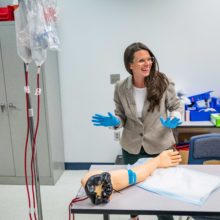Attainment is on the rise in Burke County, according to data from the U.S. Census Bureau. The percent of high school graduates, as well as those with associate degrees, bachelor’s degrees, and graduate degrees, are all going up, while the percent with some college and no degree is going down.
This comes as myFutureNC is leading our state towards its attainment goal for 2 million North Carolinians to have a high-quality credential or a postsecondary degree by 2030.
The data can be associated with a mindset shift in Burke County about 10 years in the making.
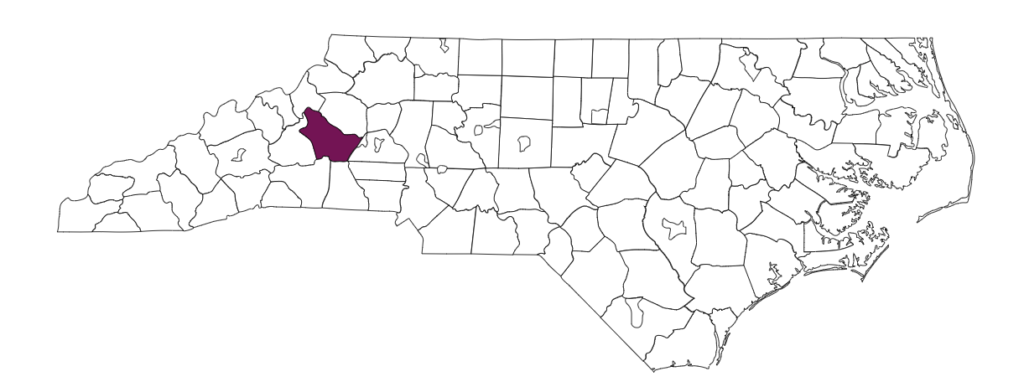
Burke County was hit hard during the Great Recession when unemployment reached 15% in 2009.
“Manufacturing companies — an industry which represented 30% of the local economy — experienced rapid retirement of their veteran workers and had trouble recruiting younger workers to fill open positions,” according to NC Commerce.
And in Burke County, the population of those aged 65+ is 21.7% — 4.2% higher than the state average.
Changes in the manufacturing industry coupled with the aging of the population left county leaders wondering, “What’s our county going to look like if we don’t have the workforce to sustain some of these industries?”
Leaders throughout the county say a cohort of partners came together to meet the challenge and shift the community’s mindset on attainment.
Burke Development Incorporated (BDI) is a nonprofit organization supported by private and public funding that has been charged with accelerating economic growth in Burke County since 1972, according to its website. Alan Wood became the president and CEO of BDI in March 2015.
Wood and other leaders understood the need for recruiting business and industry to the county. They also understood another need — the need to prepare students for high school graduation and beyond.
Community partners started convening to address the challenges and find solutions.
The first step was establishing Burke Partners in Education, called BPIE locally, an advisory group of career and technical educators, community college representatives, as well as the Chamber of Commerce, BDI, and local industry partners.
The collaborative efforts helped students understand the importance of graduating from high school and either finding employment in Burke County, going to the community college, or attending a four-year institution and then choosing to come home to raise a family.
Initially, the group met monthly to discuss opportunities for students, such as industry tours, job and career fairs, and how to help connect students to both Work in Burke and OPT-IN — the summer internship program that was the brain-child of BPIE.
Along the way, they began to collectively wonder, “Where are the high school graduates?”
Too many were not enrolling in four-year universities, not enrolling at Western Piedmont Community College, not joining the military, and not in the local job market.
Were they hanging out in their parents’ basements playing video games?
The collective question then became how could the community work together to interest students in the advantages of obtaining certificates or short-term training in specialized fields and contributing to the local economy?
Meet the partners
The school district is quick to note that whatever is working in Burke County when it comes to attainment is working because of a partnership among the leaders and organizations across the county.
Burke County Public Schools serves around 12,000 students with 1,500 staff in 27 schools, according to its website. Dr. Mike Swan has been the superintendent since March 2021.
Dr. Joel Welch is the president of Western Piedmont Community College, where “approximately 2,200 students enroll each year to pursue college transfer degrees, two year associate degrees, certificates, and diplomas. More than 2,700 students enroll in continuing education courses for professional development and personal enrichment. The College also serves over 200 students in programs for adults to complete high school and/or improve English skills in reading, writing, speaking, and listening.”
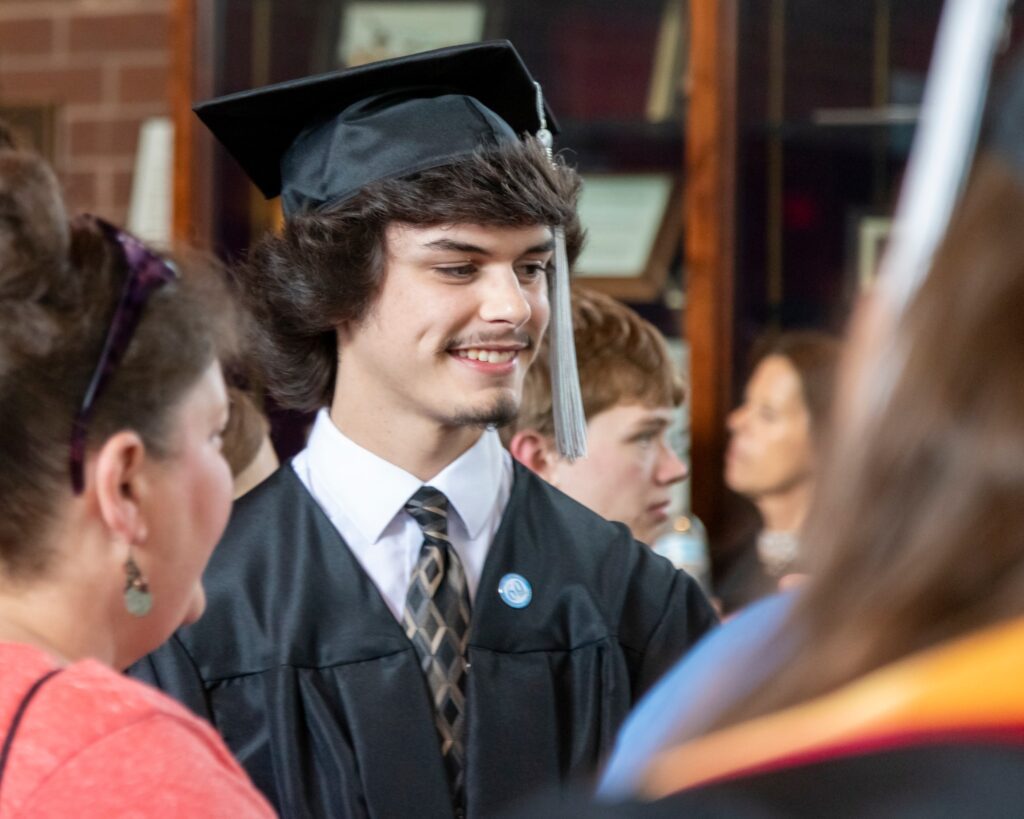
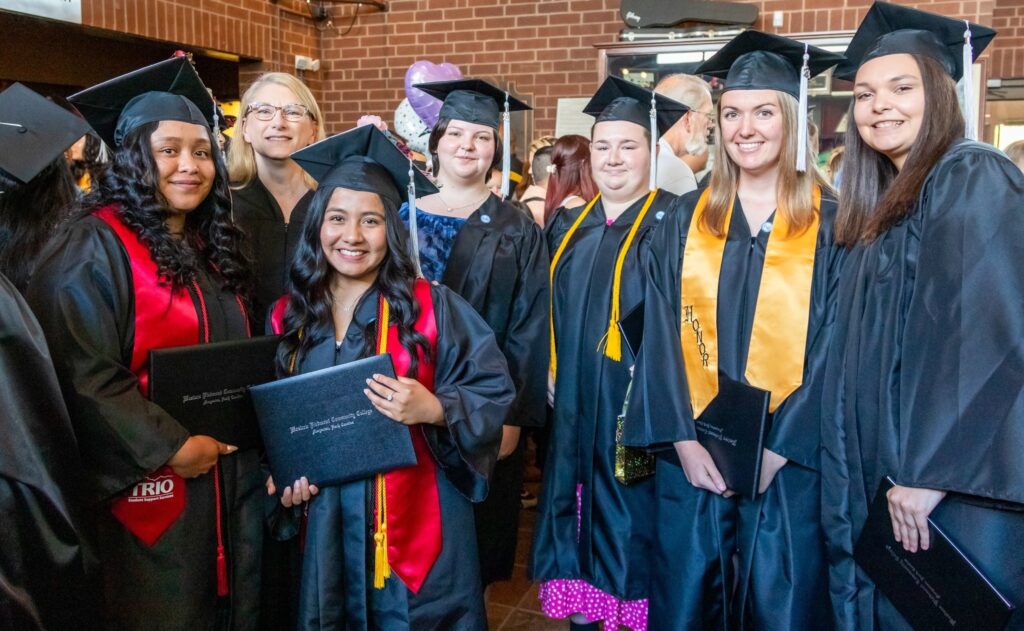
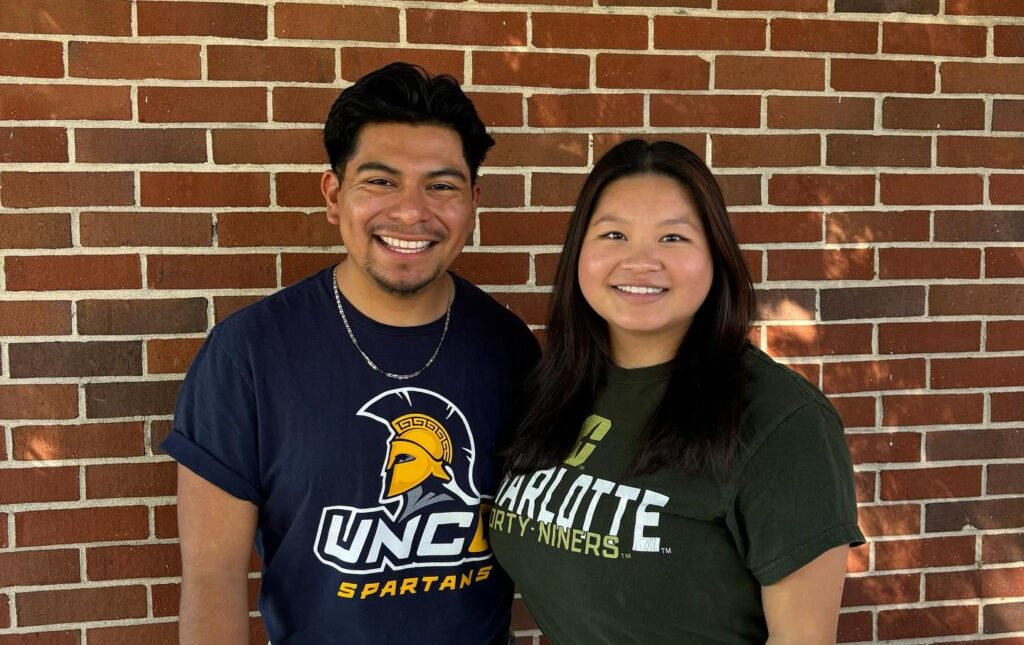
Welch, who has been president since 2020, says zeroing in on attainment requires community colleges and other entities to look at who they are not serving.
“Who are we missing,?” he asked. “And then look at what is keeping them from getting to college.”
Community colleges play a critical role in credential attainment. But equally important is partnering to create solutions and mitigate barriers.
Bringing partners to the table allows the community college to solve problems and serve the community better, Welch said. No one entity can solve these issues on their own.
“When we’re able to work with others and leverage the resources of different organizations, different partners, then we’re able to serve, impact, and draw more people,” Welch said.
Sarah Crisp, director of Work in Burke, agrees.
The partners of BPIE have tons of resources and are experts in many areas we aren’t, Crisp said. To better serve the community, Work in Burke has established numerous partnerships and worked collaboratively as much as possible.
A shared project of BDI and The Industrial Commons, Work in Burke‘s mission is to increase postsecondary credential attainment and make local workforce connections by providing mentorship and education about skilled pathways to gainful employment for students and individuals in Burke County.
Work in Burke is actively engaged locally with “opportunity youth,” or 16-24-year-olds who are not in school or working (full or part-time).
Crisp was quick to point out that opportunity youth aren’t just those sitting in their parents’ basements playing video games.
One of Work In Burke’s very first participants had just exited the foster care system leaving him without parental input or guardianship — a major lack of support and mentorship. He didn’t know what to do or who to ask for help, a situation Work in Burke leaders often see.
“They don’t have anyone they can trust or rely on,” Crisp said. “They have no one they can talk about these big decisions for their lives.”
Opportunity Internship (OPT-IN), a program of the partners, is an eight-week exploratory program for recently graduated high school seniors. This program begins in June (after high school graduation) and involves work experience and professional development, according to the website.
OPT-IN also includes a mentorship component, and many individuals from partner organizations serve as mentors. It’s a chance for mentors to share their expertise and knowledge and support individuals who may need additional guidance figuring out their next steps, particularly for those who do not have a robust support system at home.
“The ultimate goal of Work in Burke is to change the narrative about education and workforce success; students can earn marketable credentials and achieve fulfilling careers in their home county, and they do not have to move away to be successful. The stakeholders involved with creating Work in Burke aspire to change both attitudes and behavior, and they understand that moving the needle on both of these metrics takes time.”
NC Commerce
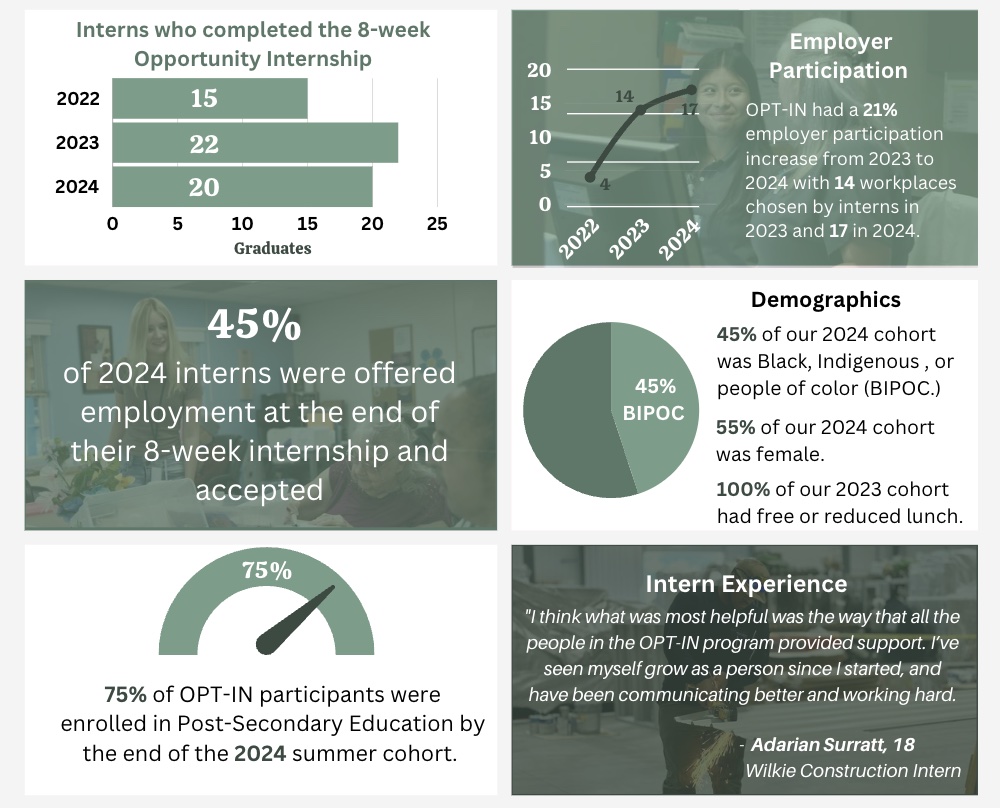
Work in Burke is one of myFutureNC’s local education attainment collaboratives. Since inception, the goal has been to build and sustain a “multi-pronged, collaborative, and long-term effort” to change the narrative around success in the county.
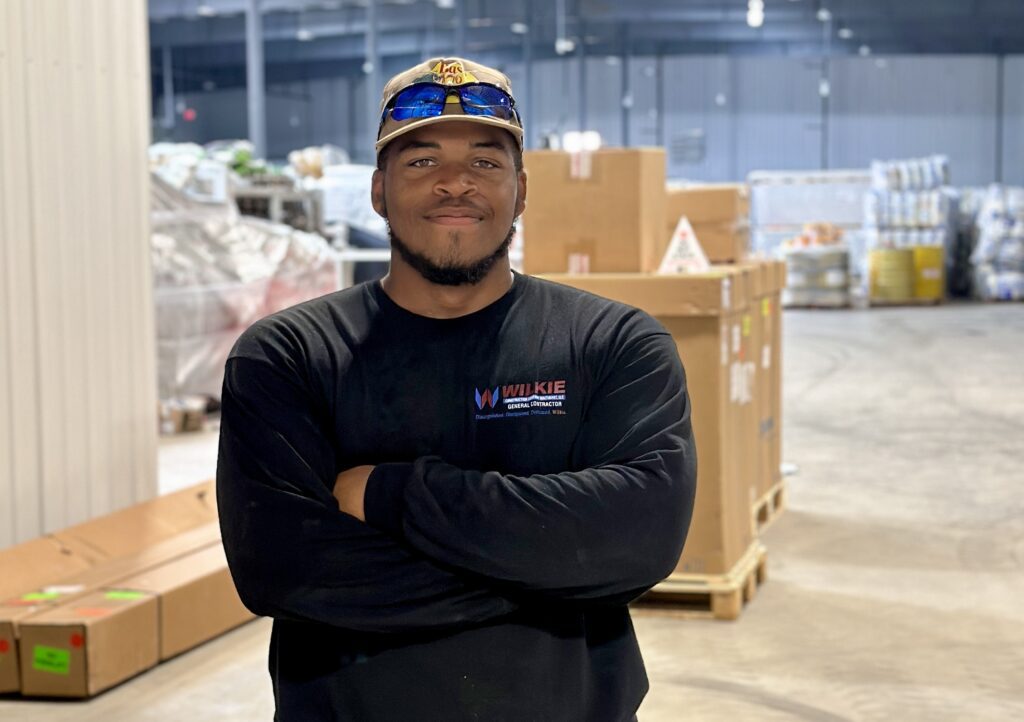
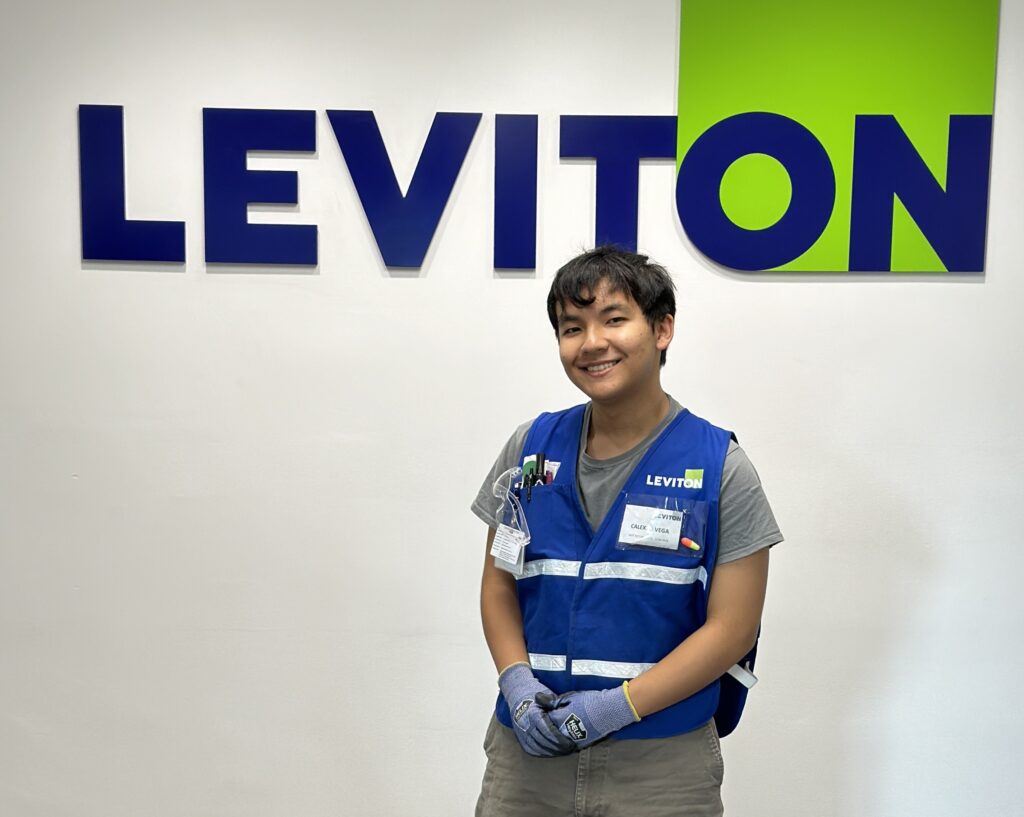
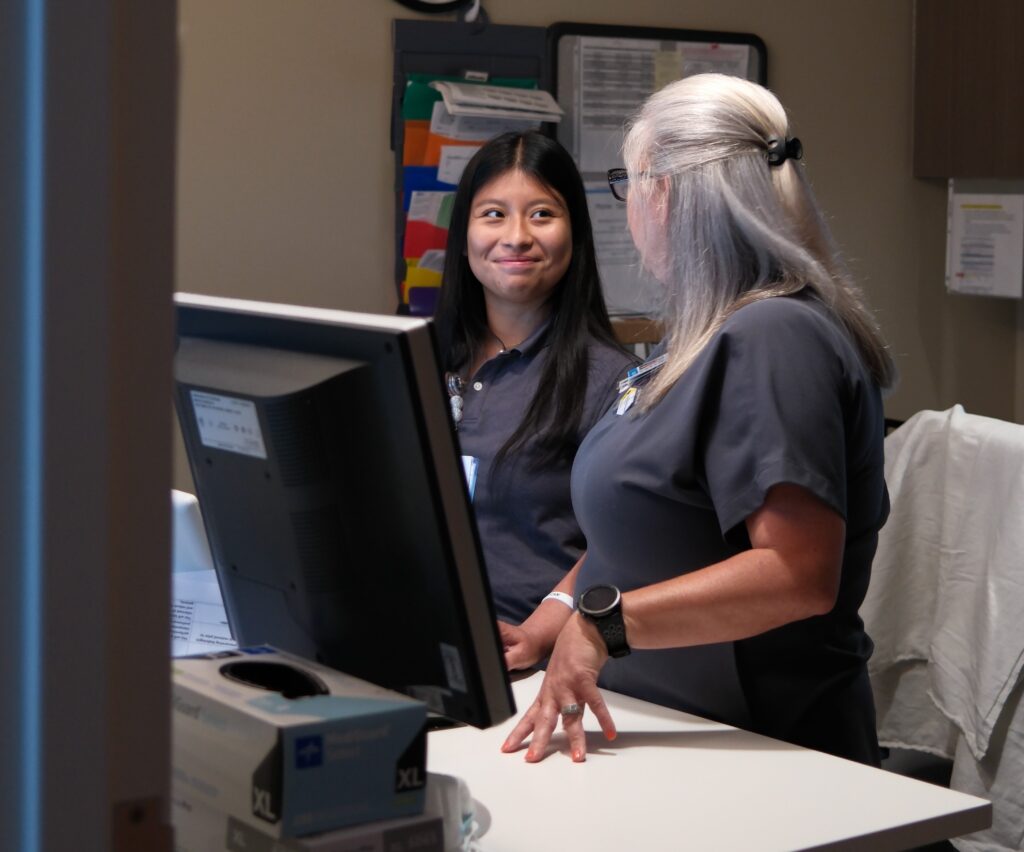
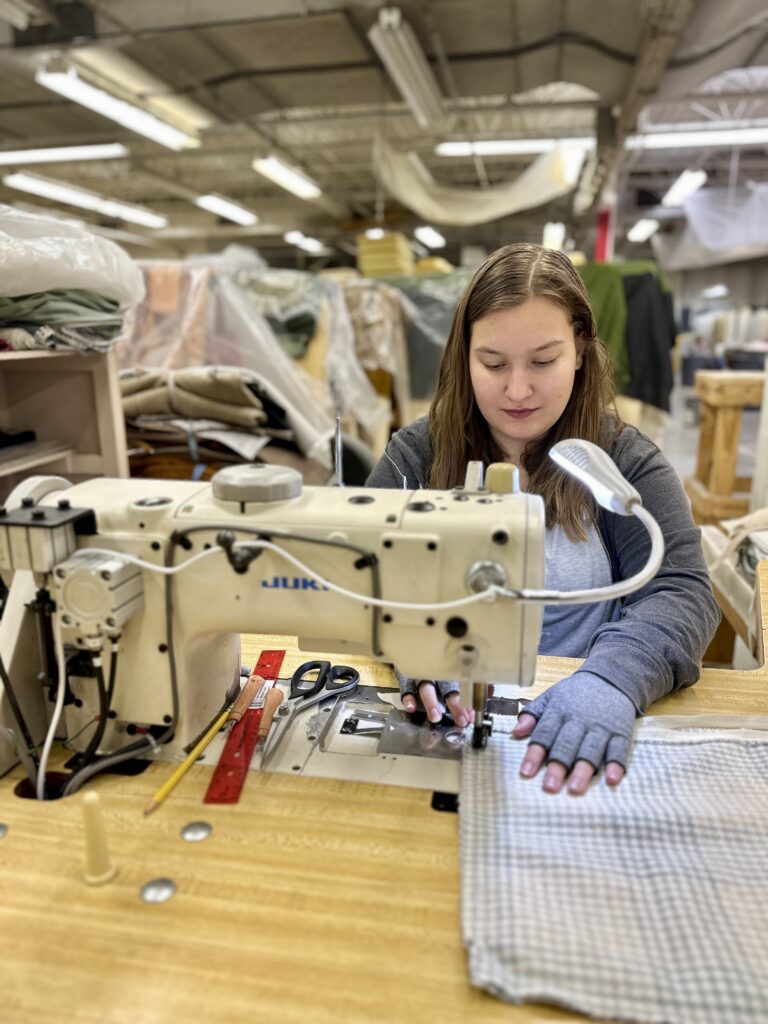
“Local industries were founding partners with BPIE, Work in Burke, OPT-IN, JET and the successes would not be possible without their active participation,” says Wood. “None of this works without them.”
Dropouts aren’t numbers in this county
When terms of art arise in districts, it is often an indication that innovative strategies adopted to address challenges have become part of the culture.
In Burke County Public Schools, “flagging out” is the term used by district leaders to describe when they begin to see red flags for a student who may be on a pathway to dropping out instead of a pathway towards a meaningful career with a family-supporting living wage. Looking ahead to graduation in May 2025, the district has already flagged students not on track to receive a diploma with their cohorts. Counselors are reaching out to them to see how best to help them recover credits needed and graduate on time with the appropriate cohorts.
Ahead of the start of school this year, the faces of the students who dropped out last year are on the minds and hearts of everyone in the district from school counselors to the superintendent.
This year, that is 117 faces.
Later in the school year, 117 high school diplomas were stacked up to visualize the loss.

And towards the end of the school year, 117 unworn graduation caps will remind them why they are so collectively committed to building a culture of attainment.
Swan knows many of those 117 students. Before he was superintendent, he served as director of student and family services for the district.
He started in 2017, about when changes in strategies might be showing up in the data now.
It was then that the district started tracking all 9th graders in a data tracker, which is a Google sheet.
For each student, they track attendance, discipline, grades, extracurriculars, credits, and whether they are “on cohort” to graduate.
This is where the “flagging out” can first be seen by school and district leaders.
Once that happens, the school works with the student to determine who their trusted adult is in the school building. That person becomes the student’s one-on-one success coach to get them on track for graduation.
Additionally, each semester, counselors set up outside of each classroom and meet one-on-one with all juniors and seniors to make sure everyone is on track for graduation and has an “enlist, enroll, employ” plan.
Since 2019, the number of credentials earned by students has increased from 4,132 to 6,901. According to the school district, they now rank third in the state in credential attainment.
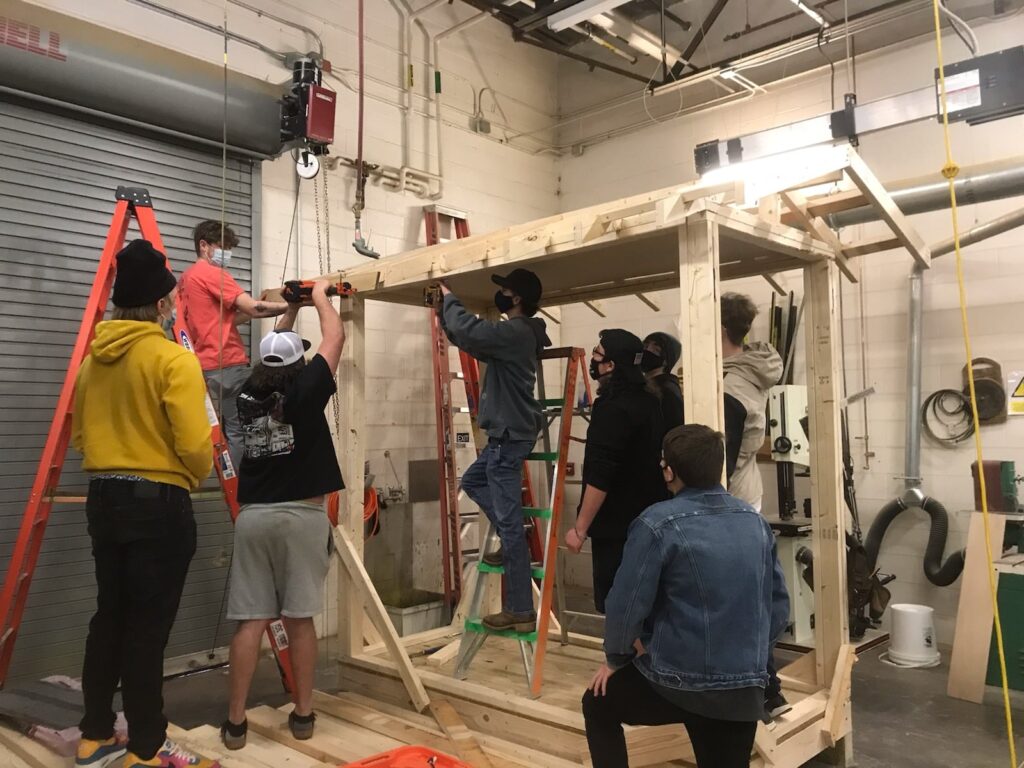
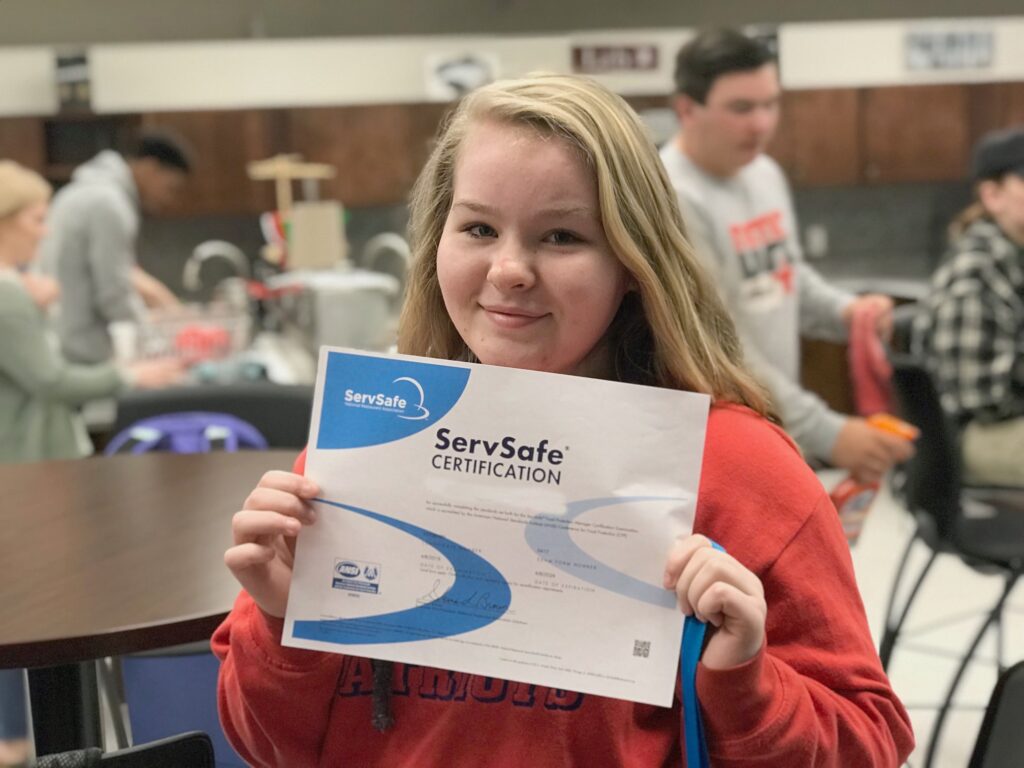
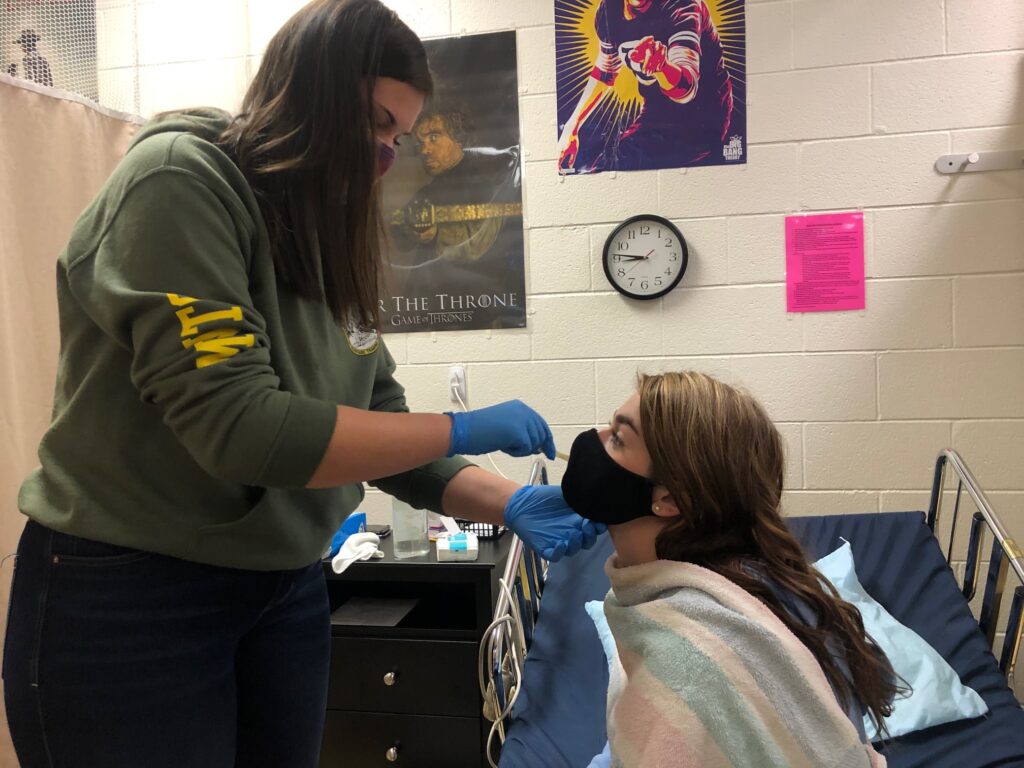
Here you can see across career pathways the concentrations completed by students.
The month of September is celebrated as “Connecting Students to Careers Month,” and this year the focus was on the construction industry.
A cohort of solutions
School district leaders say their research indicates that they start losing kids as early as second grade.
“That’s when a kid decides they don’t like school,” says Swan. “They have one bad day and then they expect to have another bad day.”
Swan says support for students to graduate now begins in elementary school.
“We gotta keep finding out what makes them tick,” he says.
And Dillon Sain, now the director of student and family services in the district, picks up and says, “and then hold their hand to the finish line.”
Practically, a cohort of solutions has been tried on and iterated by the district since 2017 — albeit with the pandemic serving as an interrupter as it did in most districts.
1) Relationship with industry: Change perceptions of industry to open minds to local job opportunities
The challenge: “Negative perceptions about the opportunities available in Burke County drove many youth to relocate and left Burke County with fewer individuals available for existing positions in the manufacturing, furniture, and textile industries.”
“There’s been like a rhetoric for a long time in the county of if you want to be successful and have a quality job, you have to leave.”
Sarah Crisp, director of Work in Burke
The solution: Ten years ago, the district started taking cohorts of employees — starting with counselors and principals — to visit local industries. The idea was to change their perceptions — and misperceptions — of the jobs available locally for their students.
2) Relationship with the community: Connect students to community mentors to increase student support for graduation and attainment
The challenge: High school seniors without life skills that would help them avoid the trap of “senioritis.”
The solution: STRIVE, which stands for “students taking renewed interest in the value of their education,” is a mentorship program for high school seniors in the district. Mentors meet one-on-one with students offering encouragement and opportunities to discuss career pathways, receive support from community members, and learn soft-skills to keep them on track for graduation and beyond.
Former Board of Education member Buddy Armour helped start STRIVE in 2007 at Freedom High School in Burke County. By 2017, the program had evolved in such a way that it became a district initiative with a footprint at all four high schools in the county. Students participating in STRIVE are eligible for scholarships and assistance with postsecondary plans.
3) Relationship with families: Ensure all families are welcome and included to support graduation and attainment
The challenge: Shifting demographics in the county meant more parents didn’t speak English and weren’t familiar with American systems of education.
The solution: The district is regarded nationally for its family engagement specialists who serve as parent educators and holistic support for families where English is a second language. The district offers STEPS (Strategically Teaching and Engaging Preschool Students), a part-day preschool program that plays a key role early on in building trust with the school house. FUTuRES stands for Families United to Resources and Education through the Schools, and it offers family support specialists, parenting programs, and support for grandparents and kinship caregivers.
Over the last several decades, Morganton, the county seat of Burke, has experienced an increase in migrants, particularly in its Guatemalan population. Burke County Tourism says the migrant population brings “wonderful uniqueness as a community, and opportunities, but there are also many cultural barriers.”
One small business in Morganton is helping bridge that gap among neighbors in the community.
Little Guatemala is a family owned business serving coffee, chocolate, and street foods authentic to Guatemalan culture. There’s also a chance for community members to explore crafts and engage in pick-up soccer games or join soccer leagues.
Burke County Tourism calls it natural connection builders.
4) Relationship with learning: Better differentiate learning for all learners to increase graduation rates and attainment
The challenge: The district needed to teach educators how to provide differentiated instruction for every child in every classroom to increase academic performance.
The solution: The district connected with Rhonda Bondie at Harvard’s Graduate School of Education to learn about “Differentiated Instruction Made Practical” (DIMP). Nine leaders went to Harvard to be trained, and when they came back to school they trained a cohort at every school in DIMP. Every year, the principal added more educators to the cohort.
At the same time, the district added on the idea of “instructional rounds.”
Instructional rounds — a practice adapted to education from the field of medicine — offer a structure for educators to work together to identify and solve common problems related to learning and teaching. The model has been used within schools, across schools, and across districts to raise the quality of instruction for all students. The instructional rounds process provides a disciplined, collaborative way for schools and districts to:
- Diagnose learning needs for students and educators;
- Focus on and improve learning tasks;
- Develop a shared vision of high-quality teaching and learning; and
- Foster a collaborative culture that supports learning.
The district has iterated the use of instructional rounds post-pandemic to let educators drive what they want feedback on.
The rounds helped school and district leaders identify challenges — including bell to bell instruction, time on task, and mastery of content by all — that could be improved.
The two strategies together have led to continuous improvement in differentiated learning for all students over time.
As more educators come on board in Burke County, the district continues to train them in these practices that have proven instructional gains.
A culture of attainment
The idea of attainment permeates throughout the county and is a shared vision among Burke Partners in Education.
“It’s kind of like a culture now. It’s just our culture. It’s how we are,” said Cheryl Shuffler, the public relations officer for the school district.

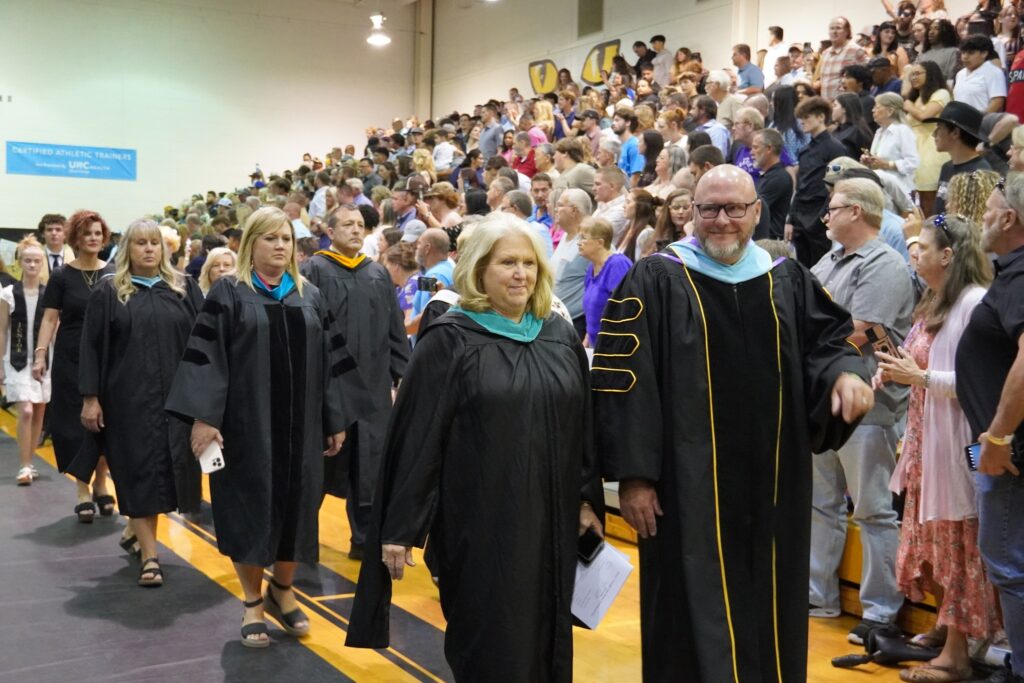
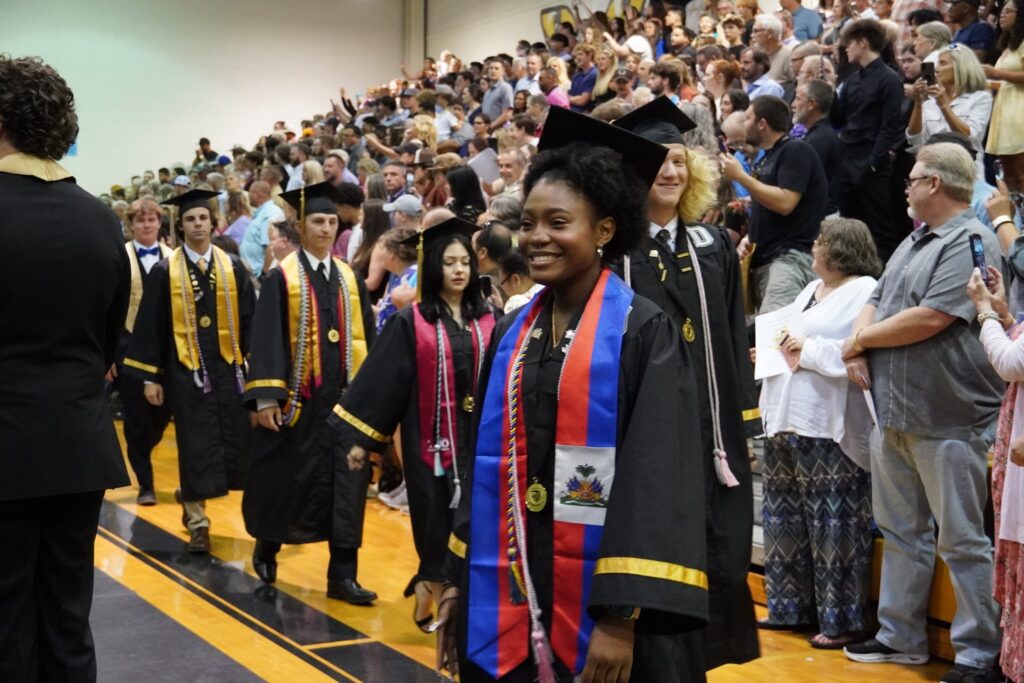
Ten years in, the work of the partners and the solutions deployed by the district to strengthen relationships with industry, the community, the families, and the students’ experience of education itself is making a difference in terms of attainment.
Now, “It’s the Burke County way,” says Swan. “We understand that the future belongs to those who continue learning beyond high school. Earning a degree or credential after graduation opens doors to opportunity, not just for the individual, but for the entire community. When our graduates pursue higher education or vocational training, they equip themselves with the skills needed to thrive in today’s economy and contribute to the long-term success of Burke County and beyond.”




